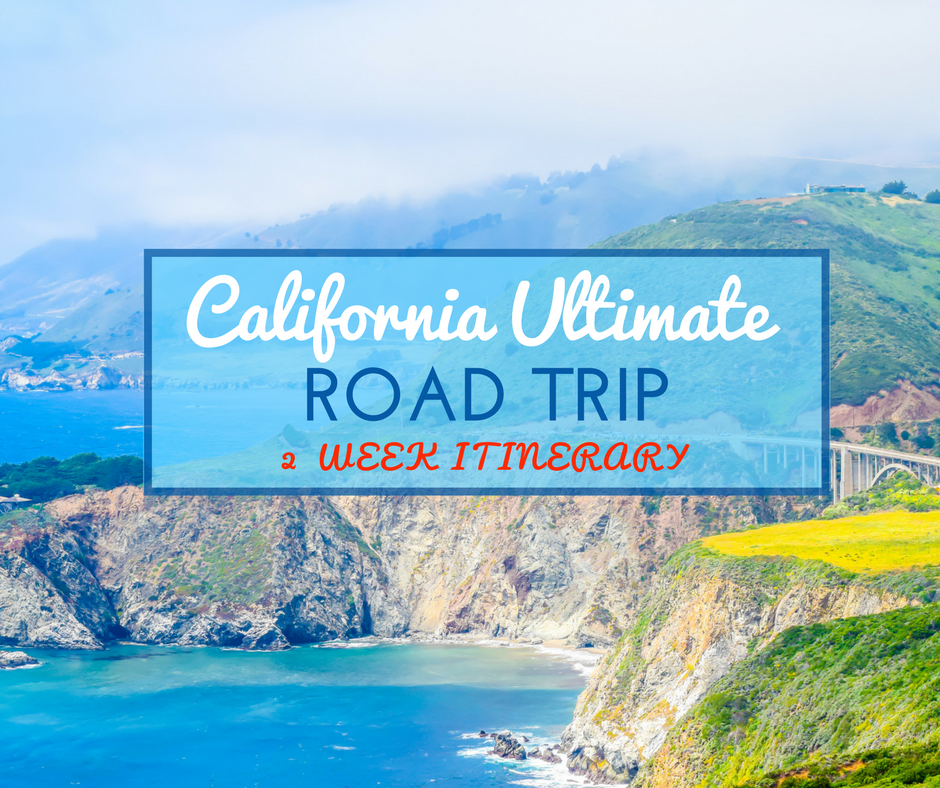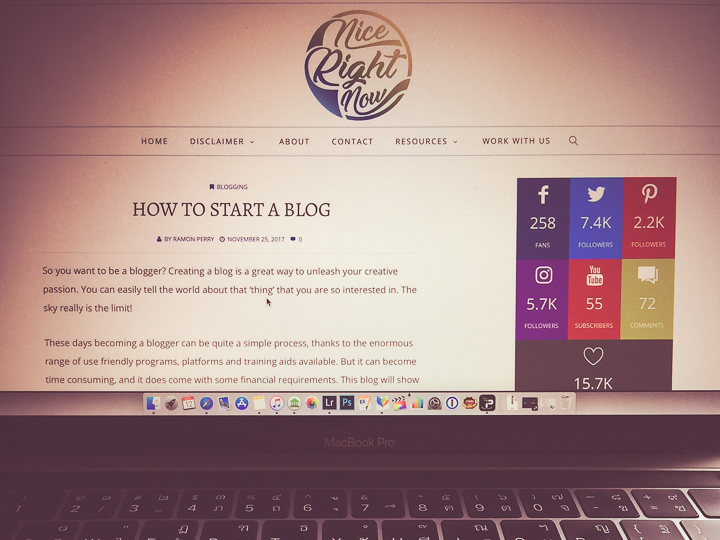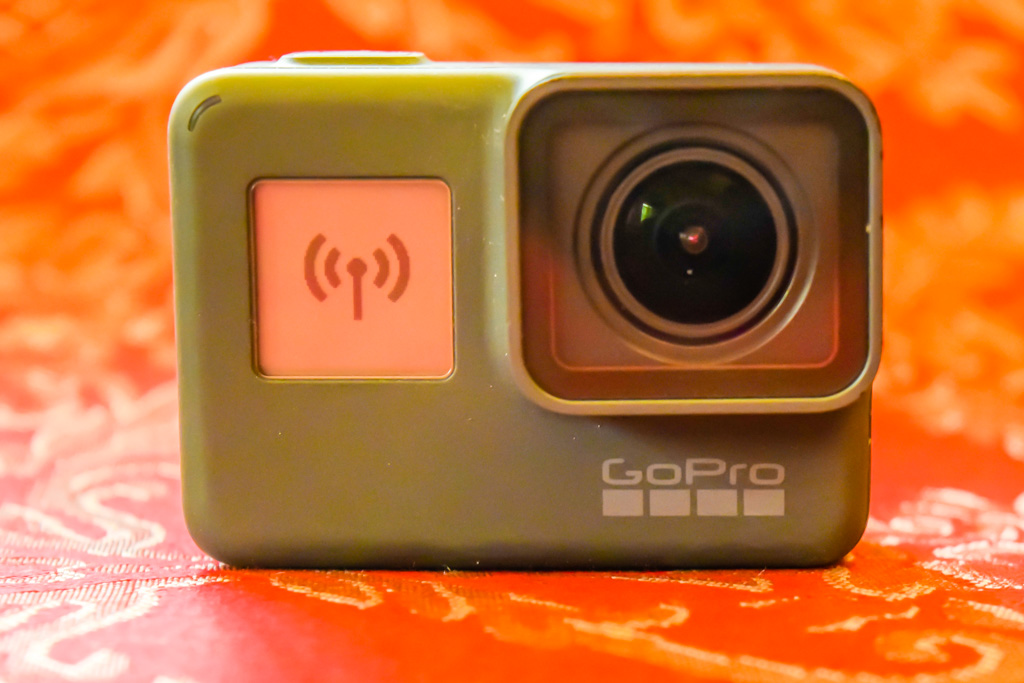So you want to be a blogger? Creating a blog is a great way to unleash your creative passion. You can easily tell the world about that ‘thing’ that you are so interested in. All you need to do is to start a blog of your own, then the sky really is the limit!
It’s Easy to Start a Blog
These days becoming a blogger can be quite a simple process, thanks to the enormous range of use friendly programs, platforms and training aids available. But it can become time consuming, and it does come with some financial requirements. This blog will outline what those commitments typically are.
Note: This post may contain affiliate links. Please read our disclosure policy for more information.
Why I Chose to Start a Blog
I decided to start my first blog in April 2017, a travel blog. At first I merely wanted to document the places we had travelled as a family. Then I realised that our stories could be useful to other travellers, as they research their next holiday. I decided I wanted to help other travellers to ‘find their way’, and to inspire them to go travelling. I am passionate in my belief that travelling can enrich people’s lives enormously.
Whatever your reason to be a blogger, I will try to give you a rough idea of the level of commitment required to publish a blog. To do this I’ll outline the basic workflow I follow to create our www.nicerightnow.com travel blog. At the bottom you will find a list of the software, financial and time requirements.

Initial Blog Set Up
Web Hosting
You will need a web-hosting platform to keep your blog on. I use Bluehost, probably the biggest web hosting service out there. You can use the free service (not recommended) or the paid subscription (highly recommended).

Web Creation Platform
WordPress is the most popular platform to build you blog on. It is free and can be accessed directly through your web-hosting service, particularly if you are using Bluehost to keep it nice and simple.
Domain name
You will need to purchase your very own domain name. I use GoDaddy to research available names, then just purchase them through Bluehost.
Theme
A theme is mandatory for your blog. Your chosen website theme is loaded using WordPress. I used RockyThemes to find a nice premium theme. You can also choose free WordPress themes, however premium themes are highly recommended.
Email List Provider
If you are planning to monetize your blog you will need to start building an email list, the backbone of monetizing strategies. You can set one up for free using Mailchimp.
Opt-in Form
To direct people to subscribe to your email list you will require an opt-in form. You can set up one for free using Mailchimp, or you can pay for a fancier service using a provider like Optinmonster.
Google Analytics
You will want to set up Google Analytics, which analyses the performance of your website. This is virtually mandatory for web sites these days. Good thing it’s a free service.
WordPress Plugins
There is an enormous library of free and paid plugins available for your WordPress site. These cover a whole plethora of functionality, from performance enhancements to visual eye candy.
Training for Bloggers
You will need some training to get started with your blog. And it needs to be current training, because each program and platform is constantly evolving. Here is a list of the main training programs which I used:
- Getting Started with Rocky Themes – free Youtube training
- Udemy – WordPress for Beginners – this course cost me $10 and instructed me in everthing I needed to know to set up a website and choose the best plugins. Best $10 I ever spent.
- Itsalovelylife – 30 day Blogging Fast Track, a paid course which teaches how to monetize a Blog. This course is great value for anybody who wants to get serious about making money from their blog.
Planning your Blog
Schedule
It is wise to brainstorm a schedule of upcoming blog posts. This helps to alleviate ‘writers block’ where you don’t know what to write about. For this I use Google sheets which is 100% free.
Mind Mapping Tool
When it’s time to write a blog post in detail, a mind-mapping tool is invaluable for brainstorming the topics and content. For this I use Mind Node for Mac. There are free mind mapping software but I prefer this paid version for it’s seamless syncing between mac and iPad.
Research SEO Keyword
It is important to get Search Engine Optimisation right so that people can find your hard work using internet search tools. For this I use SEOBook, which has a great free SEO tool for finding the best keywords.
Write the Blog Post
You can write your blog post on virtually any word processing software. I use Google Docs because it is accessible on any computer that you log in on, also mobile devices. It is also supported by mobile apps for full syncing. Very handy.
Take pictures and save Photos
Most good blog posts will require some images embedded. Gone are the days of text only blogs. These days a simple mobile phone photo is normally sufficient, however you will need somewhere to store them. I use iCloud as my personal photo library, with a paid subscription for a whopping 2TB of storage space.
Edit Pictures
Using and iPhone and the apple Photos app, it is possible to do some basic editing of your photos. It is a great idea to liven up your photos by cropping and adjusting light/colour settings. I prefer to use the professional software Adobe Lightroom. This is available as a free mobile version, however this has syncing limitations with your computer. I prefer the paid subscription which comes with cloud based options for syncing and editing photos between devices.

Export Edited Pictures
It is inevitable that you will compile a large collection of edited pictures from Lightroom, or whatever photo editing platform you use. It is important that these are exported at a suitable size for blog posts, nominally 100 kB for normal photos and 250 kB for feature photos. I save these using an easy filing system to Dropbox, so they are accessible from any computer.
Create Draft Web Post
Once your blog post and photos are all ready for posting, it is time to import these into WordPress to create your blog post. This essentially builds the web-page using an easy editing tool. It’s important for SEO rankings to add some internal and external hyperlinks in your blog post.
Check Spelling & Grammar
WordPress comes with a great spelling and grammar checker. It is mandatory to run each blog post through a final check before posting. Even better if you can get a human proof-reader as well.
Check SEO and Readability
One of the most important plug-ins on your WordPress site is the SEO Yoast tool. This checks your post for a whole range of SEO improvements, and readability issues. The plugin performs a range of checks for you automatically and advises you what improvements are necessary to improve your SEO rankings.
Publish Blog Post to Web
OK so all the hardwork has been done, the blog post is ready to publish. You can schedule your post to come out on a particular day using WordPress, or publish immediately. Either way this is the magic moment when your blog post becomes publically available online.
YouTube
You may like to spice up your blogs a bit by adding Video content. For this you will need to create a YouTube channel and learn how to create VLOG’s. The range of software and camera gear varies immensely. You can shoot video through your phone and use free software. My current set-up is to shoot through a GoPro video camera and edit using Apple Final Cut Pro X software, which is a top-end video editing software.
Here’s an example of a simple VLOG which can be embedded into a blog.
Check Post & Links
It’s normally a good idea to manually check your post and your hyperlinks in the published blog post. Sometimes you may find a broken link or something which is not published the way you intended. Time to go back and do some repair work if you find some faults
Promote Your Blog Post
Create Social Media Graphics
Canva is a free online tool for creating professional looking graphics to promote your blog. All you need is a photo and a little bit of imagination. I normally create a tall graphic for Pinterest and a landscape graphic for Facebook, Google+ and Twitter.

Attach Graphics to Blog Post
There are some great plug-ins available in WordPress to semi-automate promoting your blog post. I use the Social Warfare plugin to allow easy promotion of my blog posts. All that is required is to attach you Canva graphics and write some accompanying notes.
Automating Pinterest
Pinterest is one of the most important platorms for promoting blogs. It can be quite time consiming to do it properly. That’s why Tailwind is well worth paying the annual subscription. This fully automates publishing as many pins to promote your blog post as you care to set up. I automate between 10 and 20 pins per day using this service, and that probably saves me about 2 hours per week.
Automating Twitter
Twitter is another importaint platform for promoting blogs. I use a WordPress plug-in called Revive Old Post. This is another plugin which requires an initial purchase, then it fully automates tweeting your blog posts. Once again it saves a couple of hours a week in promotion time.
Managing your Blogs
All these blog posts require some sort of filing system. I use the free service Google Sheets to monitor blog posts and Social Media promotion. This is essentially a spreadsheet which records a range of different details about the progress of each blog post.
Evergreen Content
The best blog posts are evergreen content, that is they will remain current for many years into the future. For this reason it is necessary to do a regular review of each post to ensure the C content is still current. The frequency should be 6 monthly or 12 monthly.

Time Commitments for Starting a Blog
As you can see, there is quite a steep learning curve to start a blog. And quite a steep demand on your time.
- Each different software requires 2-4 hours to learn how to use it.
- 2-3 training courses are recommended, each one will require 5-10 hours to complete.
- Initial set-up of your website will require 20-30 hours.
- Each blog post requires 4 hours to write, publish and check.
- Each VLOG requires 4 hours to edit and produce.
- Social media requires at least half hour per day.
Financial Commitments for Starting a Blog
The following costs to start a blog are approximate and are in US dollars. I’ll base these on my actual expenditure, you might find different options or some discounted rates. Keep in mind that you can eliminate many of these if you are on a small budget.
Paid software
- $13 monthly – Bluehost Plus web hosting plan
- $16 annually – Bluehost domain name
- $59 one off – Themes Creativo Word Press Theme
- $9 monthly – OptinMonster basic plan
- $10 one off – Udemy course – WordPress for Beginners
- $299 one off – itsalovelylife 30 day blogging fast track course
- $30 one off – MindNode 2 for Mac
- $10 monthly – Apple iCloud 2TB plan
- $29 one off – Social Warfare plugin
- $10 monthly – Lightroom Creative Cloud
- $10 monthly – Dropbox Plus 1TB plan
- $75 annually – Revive Old Post plugin
- $119 annually – Tailwind
- $300 one off – Final Cut Pro X
Free Software
- WordPress
- Mailchimp
- Apple Photos
- YouTube
- Apple iCloud
- Canva
- Google Docs
- Google Sheets
- Apple iMovie
- Google+
Bottom Line
To start a blog you will need to invest a considerable amount of time and money. Time wise I suggest you will need to invest a minimum of 30 hours up-front in training, then 8 hours per week to publish a single blog post every week.
You will also require at least 20 hours up front to build your initial website. This is quite conservative I believe, most bloggers would spend a lot more time than this. Keep in mind that you should also adopt a continual learning mind-set, and will need to continually invest time in upgrading your skills.
Financially you can start a blog for close to zero cost. But this will come with some severe limitations which will make it very difficult to expand your reach, and to monetise. My cost estimates are US $727 initial costs, then $834 per annum in ongoing software costs. You will also require access to a computer and internet, which carry additional costs.
You can start a blog merely as a hobby, albeit a rather expensive, time consuming hobby. Or you can start a blog as a business, with a comparitively small initial and ongoing costs. It is a tremendously rewarding endeavour, and a terrific release for your creative side. Hopefully now you have a slightly better idea of the committments required to start your very own blog.
Happy Blogging!
Would you like a free copy of our Ultimate Bucket List?
Not sure where to travel to next? We have created the Ultimate Bucket List to help you plan your next trip. 1170 awesome travel destinations in 167 countries. And we want you to have it for FREE.







